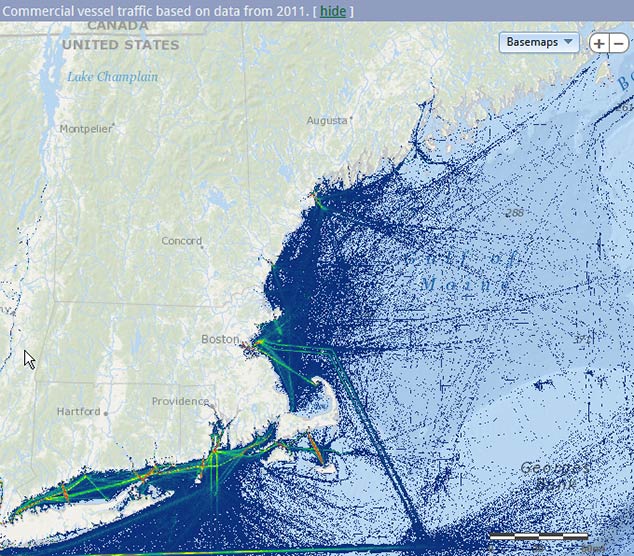Maritime Commerce and Ocean Planning
Shipping and maritime commerce have defined the historical, cultural, and economic development of New England for hundreds of years. Today, the waters of the northeastern United States include important maritime commerce routes that accommodate some 4,000 transits of commercial ships and 8,000 transits of cargo barges each year. Each year, new ocean uses add pressures to port infrastructure and shipping lanes.
Navigating the sometimes-unforgiving ocean conditions, maritime shipping companies compete with overland-based transportation companies moving goods along the Interstate 95 corridor. They must operate just above the profit margin to attract and maintain clients who demand that products reach their destinations on a tight schedule. To keep maritime shipping costs as low as possible, vessels transport goods along the shortest distance, least-cost path; even a minor change to a route could increase the cost of shipping.
Ocean planning can help ensure an efficient and competitive maritime transport industry. It can provide tools to analyze the operational and economic implications for the shipping industry of ocean use decisions and policies, and can support the better integration of regional transportation planning across road, rail, and water modes.
Links, Documents, and Reports
- White Paper: Overview of the Maritime Commerce Sector in the Northeastern United States, July 2015 (PDF) (30pp, 1M)
- Maritime Commerce on the Northeast Ocean Data Portal
- Tug and Barge Industry Meeting Summary (PDF) (14pp, 478k)
- Maritime Commerce Factsheet (PDF) (2pp, 2.8M)
- Summaries from November and December 2012 working sessions (PDF) (19pp, 583K)
- White paper summarizing the state of the maritime commerce in the region (PDF) (15pp, 783K)

